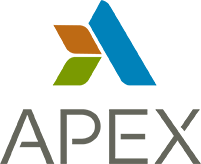Use of Upper Extremity Exoskeletons for Control of Injuries Associated with Overhead Work
Aerospace and Aircraft Manufacturing Confidential Client
Solution Overview
Client:
Leading multinational manufacturer of commercial and defense aircraft, spacecraft, satellites, and missiles
Challenge:
- Multiple factory floor tasks requiring prolonged overhead work and related high workers compensation (WC) claim costs
- Developing trust from the touch labor workforce
- Demonstrating new technologies and validating their positive impact on operational costs
Solution:
- Short term: exoskeletons were deployed during operations with positive acceptance
- Long term: exoskeletons are likely to be rolled out across the enterprise where prolonged overhead work cannot be mitigated without their use
Results:
- Greater than 80 percent reduction in WC claim frequency are expected
- $4M or greater annual reduction in WC total claim costs for this site
- 25 to 40 percent injury reduction, with full deployment of exoskeletons
- Improved overall quality due to workforce being less fatigued
Challenge
As part of an outsourcing assignment for this aerospace manufacturer, an Apex ergonomist was assigned to a team working to eliminate injuries associated with overhead work in the manufacture of the company’s jetliner models. There are several manufacturing tasks (key examples: drilling, wrenching, sealing) including installation of mechanical components and electrical wire runs, where the worker’s upper extremities are extended overhead. Additionally, preparing the aircraft surface for painting requires extensive operations where workers’ upper extremities are above their heads for multiple hours per day. Review of the client’s injury data over a four-year period (2013-2016) pertaining to ergonomics-related cases revealed 52 percent of all ergonomics-related cases involved the back, shoulders, and neck. Most of these injuries came from tasks where there are high levels of overhead work. These three injury categories resulted in WC costs of $15M for this four-year period.
Solution
There are several methods that could be considered in the quest to reduce or eliminate injuries associated with prolonged overhead work. Some methods would require complete retooling of the manufacturing process. The project team focused on methods that could be implemented quickly and not require complete redesign of the current manufacturing processes.
Exoskeletons, specifically, upper extremity exoskeletons were investigated to assist the worker in working overhead without the muscular burden of keeping their arms at or above their shoulders for prolong periods. These devices offset the weight of the worker’s arms and provide a neutral force to upwards of 15 lbf per arm.
This allows the use of hand tools and offsets the weight of these tools during prolonged work at shoulder height and higher, allowing the user to work with little to no muscular exertion, thereby reducing the stress on the musculoskeletal system.
The Apex ergonomist worked in close partnership with the client’s research teams to evaluate the use of upper extremity exoskeletons in the manufacturing process with a focus on identifying use cases, working with mechanics, sealers, painters, and electricians to assist in identifying the type of upper extremity exoskeleton that best suits the type of work performed.
Currently exoskeletons are being tested and used in production in five aircraft programs; this effort is expanding.
Results
The use of exoskeletons in the manufacturing environment is still in the early stages of implementation and testing. But the testing undertaken in the last two to three years has shown promising results. The theories around these technologies have proven to yield fruit in that loading of the muscle groups involved in overhead work has been reduced. The amount of support these devices provide differs depending on the posture and support needed by the work itself. The level of support provided by the devices tested to date range between 6 lbf, and 15 lbf, for each arm. The worker can adjust the level of force needed based on the type of overhead work performed.
These devices are not without challenge. Some employees find them restrictive, some find them “hot.” Another challenge is that some devices have a larger operational envelop, creating concern that the worker might unintentionally back into and contact the work piece causing damage. Also, there are concerns that two workers cannot work in close quarters to one another while both are wearing these devices as, depending on the device, the workers could interfere with each other.
Ergonomic risks involving injuries associated with overexertion are of the magnitude of about $42M annually for this customer enterprise wide. For the site the Apex ergonomist was engaged with, it is anticipated that over the next two years a reduction in injury costs associated with prolonged overhead work in the range of 25 to 40 percent will be achieved once these exoskeletons are used in earnest, significantly reducing the ~$15M WC spend currently experienced by the site.
Improvements in quality and labor costs are expected due to the fatigue reduction among touch labor. Labor cost improvements are also expected as scheduled work will be completed on time more often (and potentially ahead of time) which is always a benefit. Improving quality while optimizing labor cost is always a good result.
